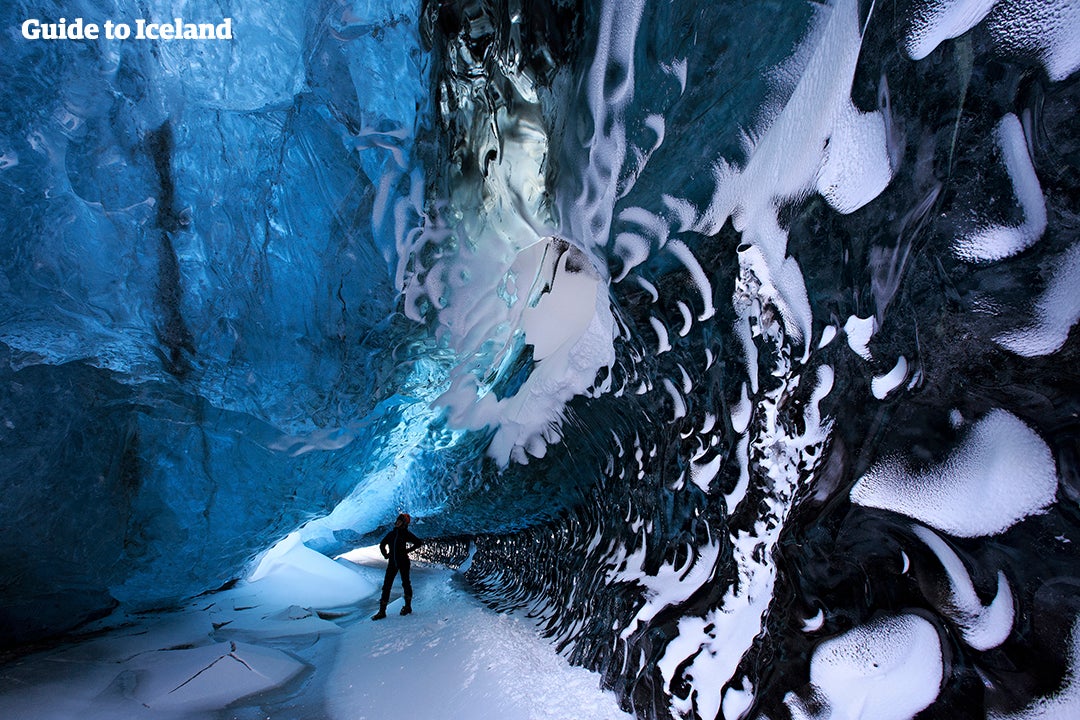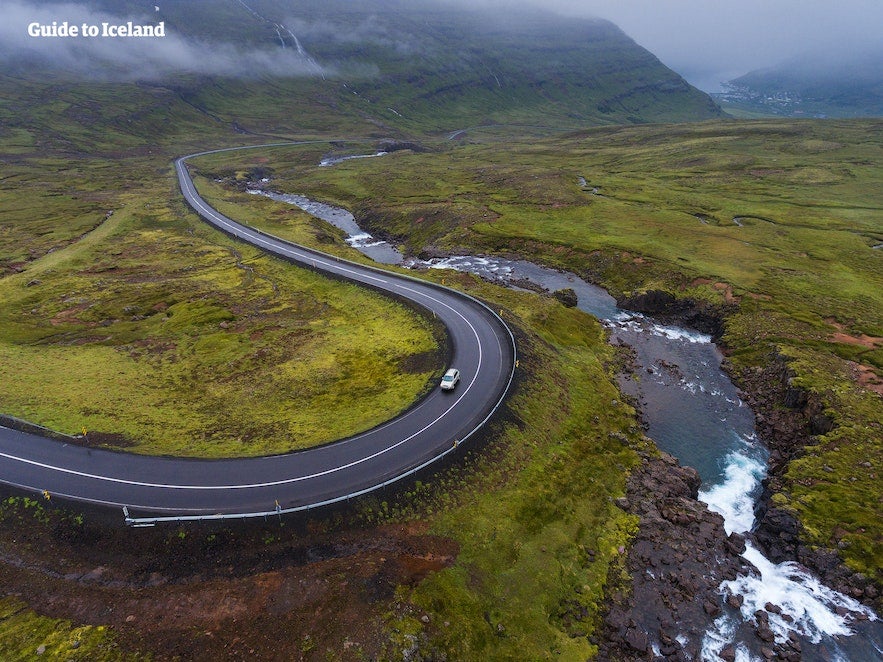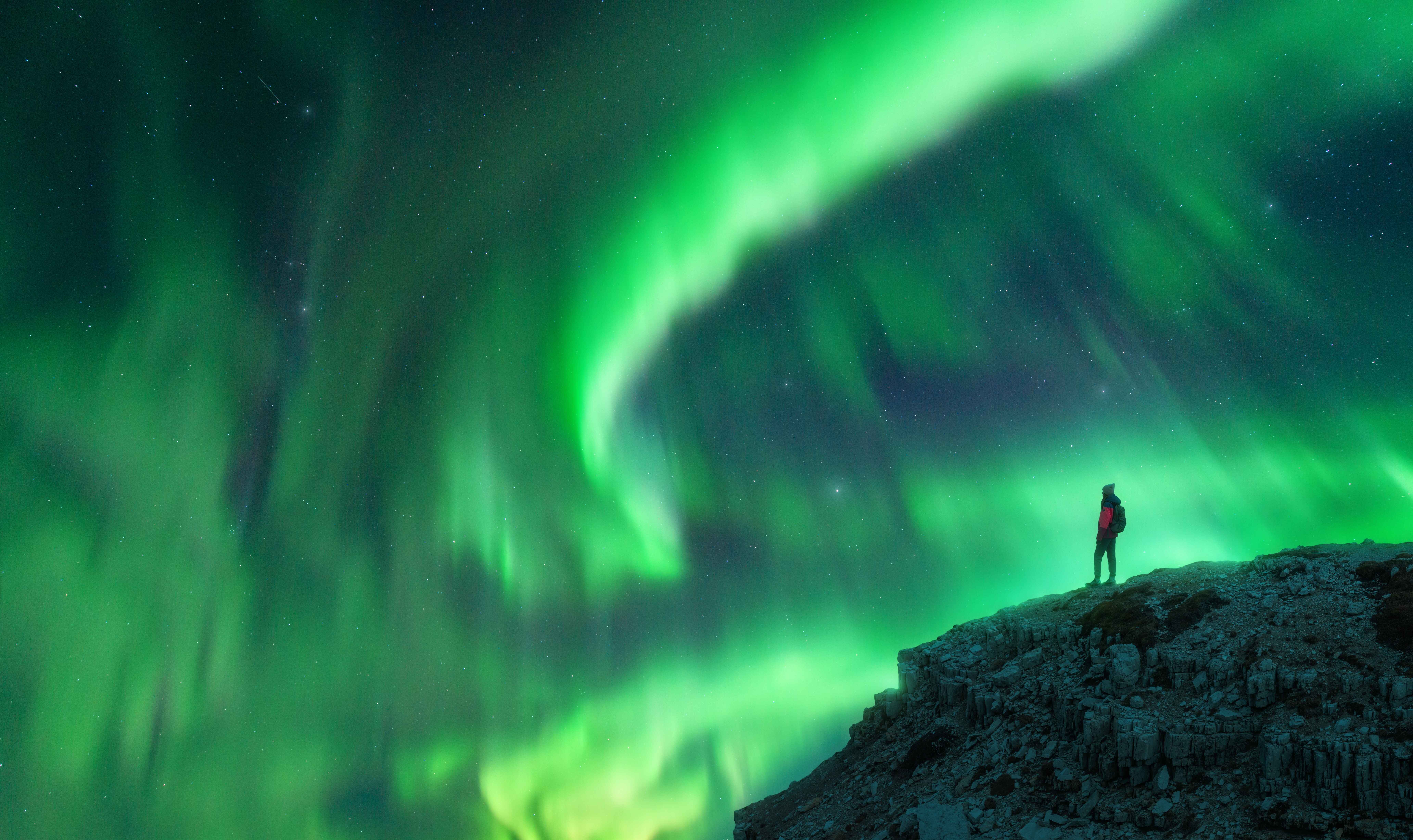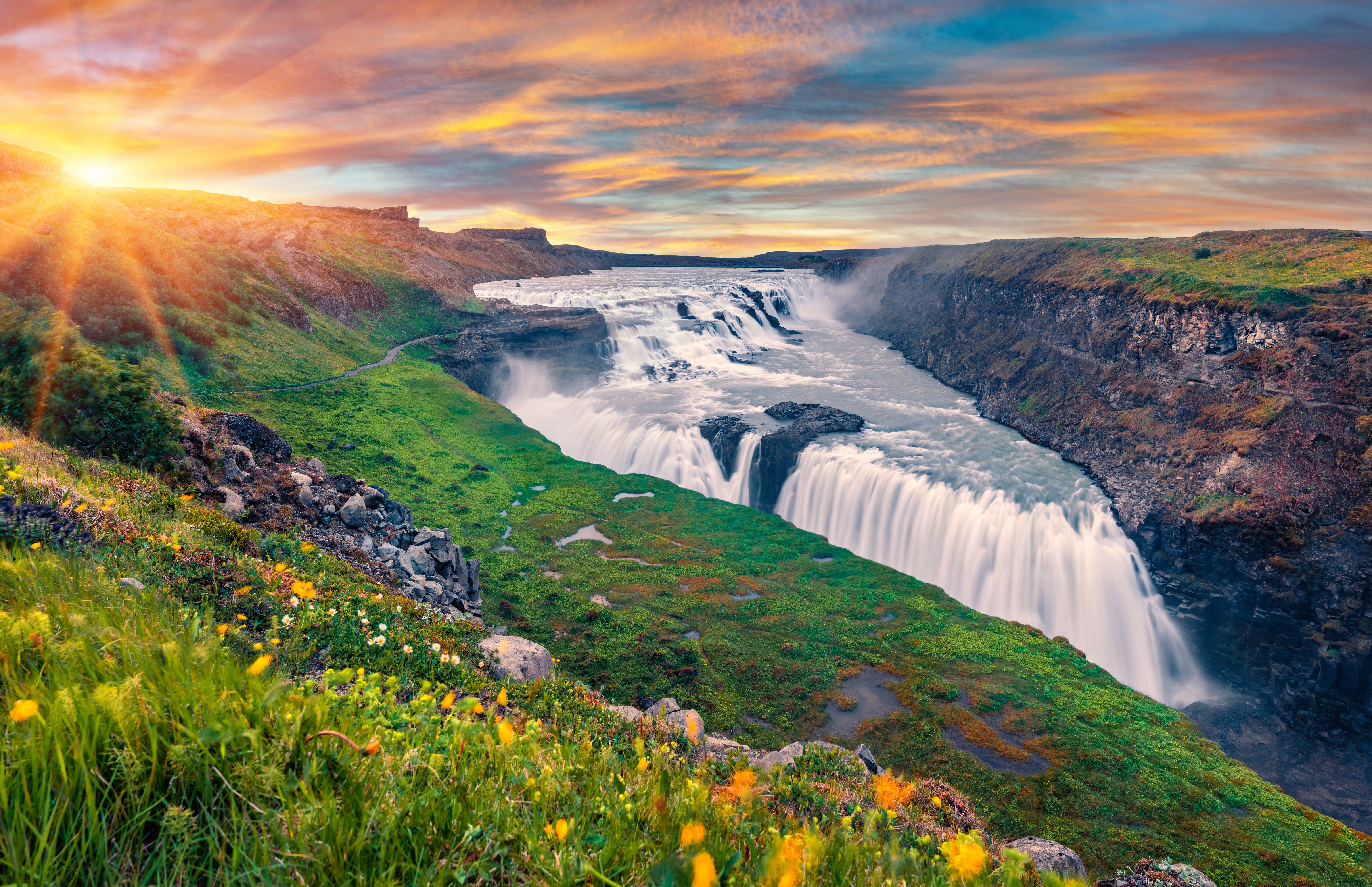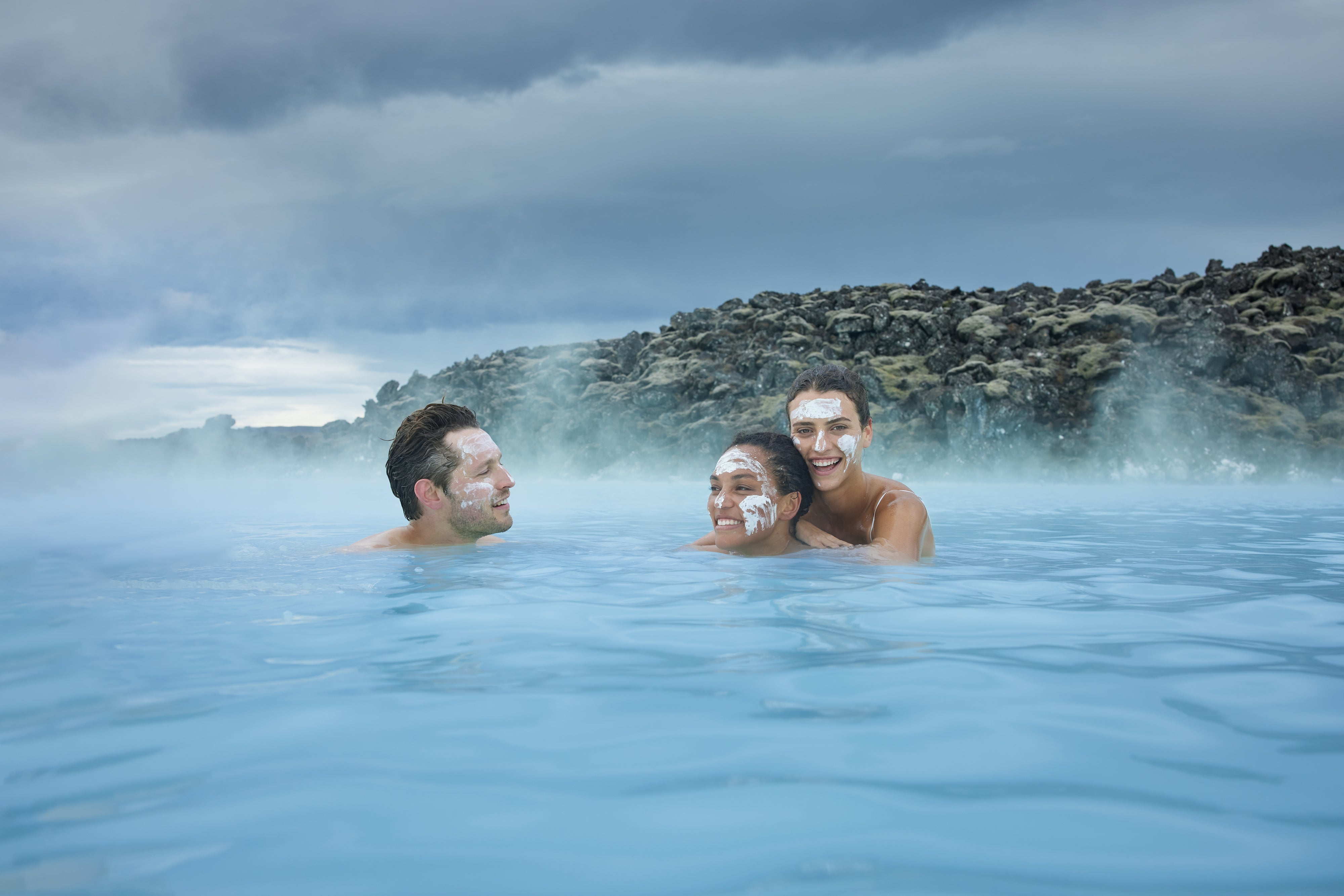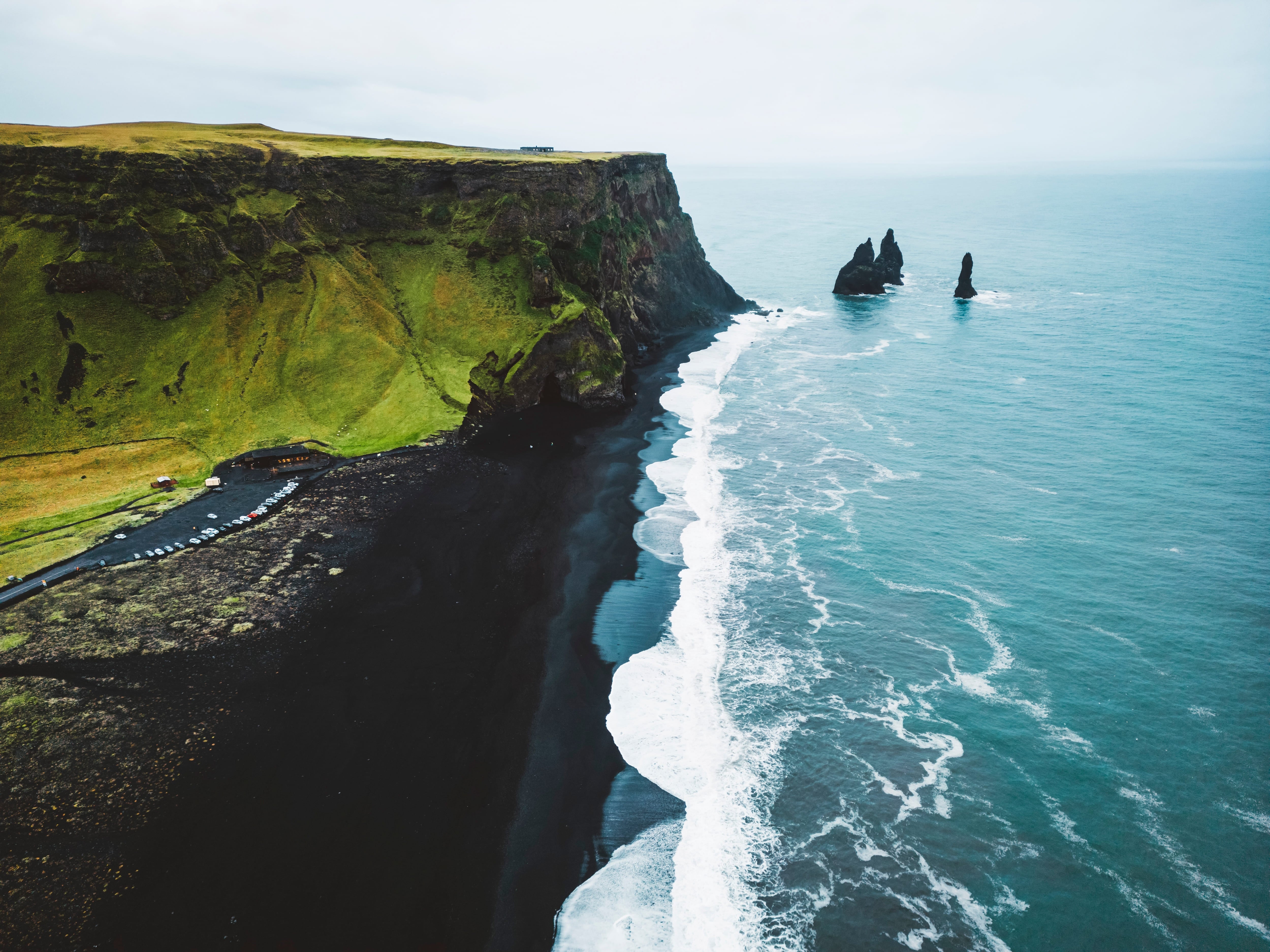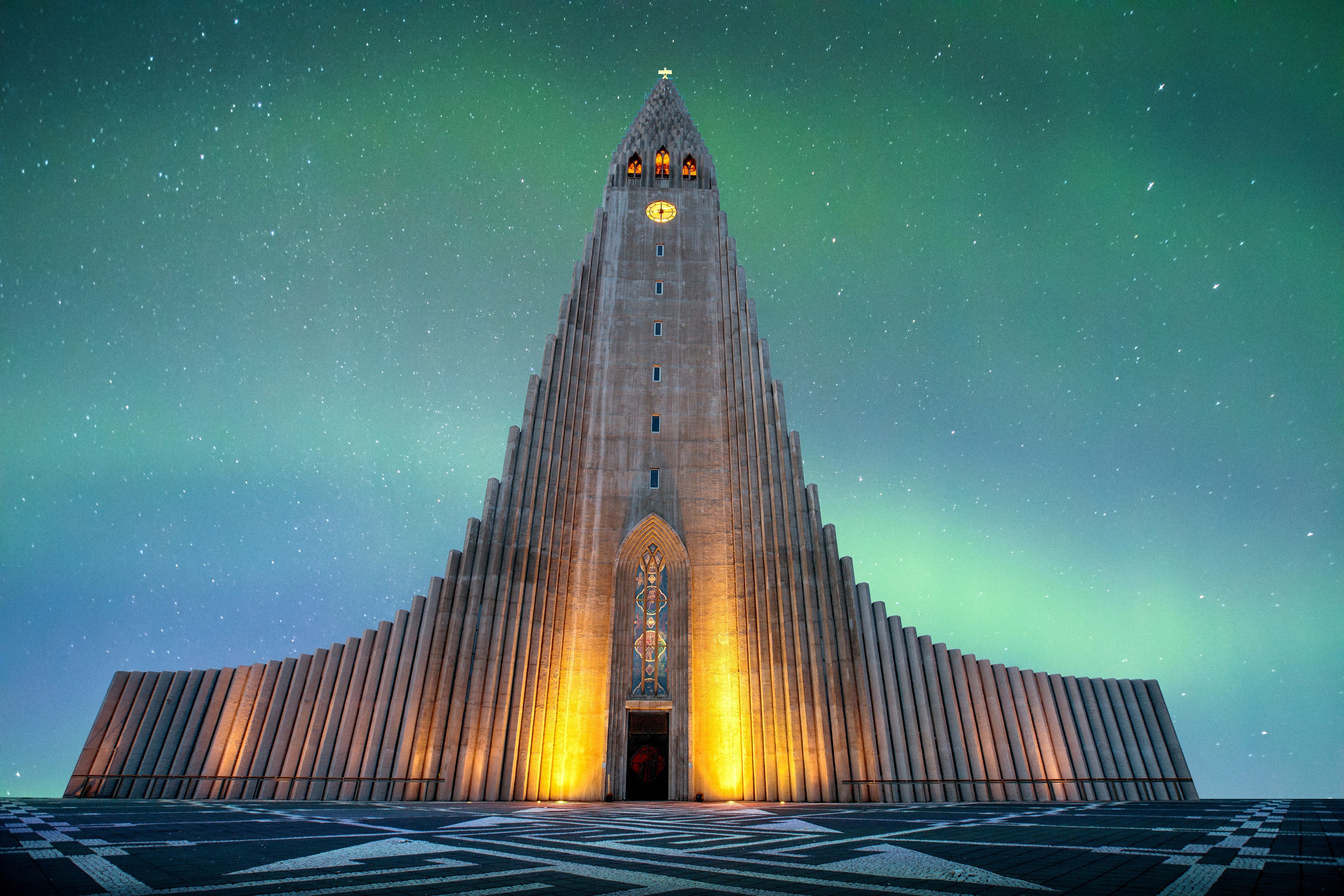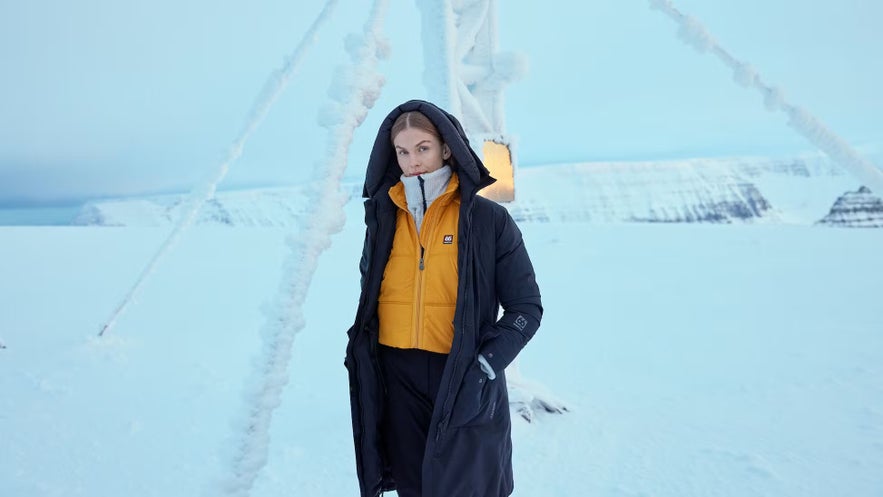
Preparing for a winter adventure in Iceland is exciting, and knowing what to wear is key for a comfortable and unforgettable journey. Whether you're opting for a city break and staying in cozy Reykjavik accommodation or embarking on self-drive tours around the country with a convenient rental car, the right preparation is essential.
While exploring the beautiful landscapes during winter tours, you'll notice how quickly the weather can shift from serene snowfall to blustery winds. This unpredictability isn't just a challenge; it's part of the Icelandic charm!
Why You Can Trust Our Content
Guide to Iceland is the most trusted travel platform in Iceland, helping millions of visitors each year. All our content is written and reviewed by local experts who are deeply familiar with Iceland. You can count on us for accurate, up-to-date, and trustworthy travel advice.
Your itinerary will likely be packed with diverse activities, from glacier hikes to northern lights tours, and whatever your plans, dressing appropriately is crucial. Reliable brands like 66 North offer quality clothing and equipment that make it easy to enjoy the breathtaking winter scenery in comfort.
Discover what to wear during an Icelandic winter, ensuring your experience is as magical and memorable as possible. Use this guide as your Iceland winter packing list so you can focus on enjoying the trip.
- Learn all about Iceland in Winter - The Ultimate Travel Guide
Best Clothing for Winter in Iceland
Venturing to Iceland during the winter requires thoughtful preparation in terms of attire. It all depends on your itinerary, but in general, the key to warmth and comfort is layering. This is true whether you're planning city sightseeing or longer winter road trips.
Start with a moisture-wicking base layer (merino wool or synthetic) to keep dry. Add a warm middle layer like a fleece zip-neck or wool sweater for insulation, and top it off with a windproof, waterproof shell to block sleet, rain, and wind chill. Avoid cotton next to your skin, as it retains moisture and makes you colder.
For visibility during dark hours, choose outer clothing with reflective details and clip on a small reflector to your jacket or bag. A compact headlamp is also handy for walking paths and parking areas.
Sturdy, waterproof boots are a must for navigating snowy and icy terrain. For towns and car parks, pack compact ice cleats (microspikes) to prevent slips on black ice. For guided glacier tours, technical crampons are provided by operators and used only on the ice with suitable hiking boots.
Accessories are very important. Bring a warm hat or balaclava, a neck gaiter, and insulated mittens (plus thin liner gloves for dexterity). Thick thermal socks are a lifesaver—carry a spare dry pair in your daypack. Hand warmers and a sit pad make aurora-watching far more comfortable.

Of course, one of the most important things to bring is swimwear, though this is true for any time of year. You won't want to miss out on hot spring tours and Iceland's famous bathing culture. Plan a visit to locations like the Blue Lagoon, the Sky Lagoon, or Hvammsvik Hot Springs. Pack flip-flops and a quick-dry towel, and remember to shower thoroughly before entering the pools, as is the local custom.
Other easy things to forget about are sunglasses and sunscreen, which are also essential. The snow can be very reflective, which can be dangerous if you're driving or out on glaciers. Also, remember to bring moisturizer, hand cream, and a good lip balm. The cold and wind are very rough on the skin.
- See also: What to Wear in Iceland: The Ultimate Guide for All Seasons
- Also, check out What To Pack for Iceland for All Seasons
What to Wear in Reykjavik in Winter
 Winter weather in the South Coast and Capital Region tends to be milder than in many other parts of the country. There's still a risk of high winds and snow, but generally speaking, you can opt for slightly lighter gear than in the countryside.
Winter weather in the South Coast and Capital Region tends to be milder than in many other parts of the country. There's still a risk of high winds and snow, but generally speaking, you can opt for slightly lighter gear than in the countryside.
Because you'll be moving in and out of warm buildings—museums, shops, restaurants—prioritize easy-to-remove layers. A long waterproof down or synthetic parka over a light wool or thermal sweater works well. Sidewalks can be icy even when streets look clear, so compact ice cleats (microspikes) are very useful for city walking.
In November and April, when winter can be less intense, everyday outfits can work if you add a thin merino top and leggings under jeans and wear waterproof footwear. Always adapt to the day's forecast and how much time you'll spend outdoors.
- Learn more: The History of 66°North: Keeping Iceland Warm for a Century
- See also: The Ultimate Winter Itinerary for Iceland
What to Wear for Winter Activities in Iceland
If you're planning a winter trip to Iceland, many adventures are waiting. Whether it's seeing the majestic northern lights, exploring ice caves, or flying over snowy fields on a dog sled, it's important to be well prepared. Here's what to wear to some of the best winter activities in Iceland.
Glacier Experiences in Iceland
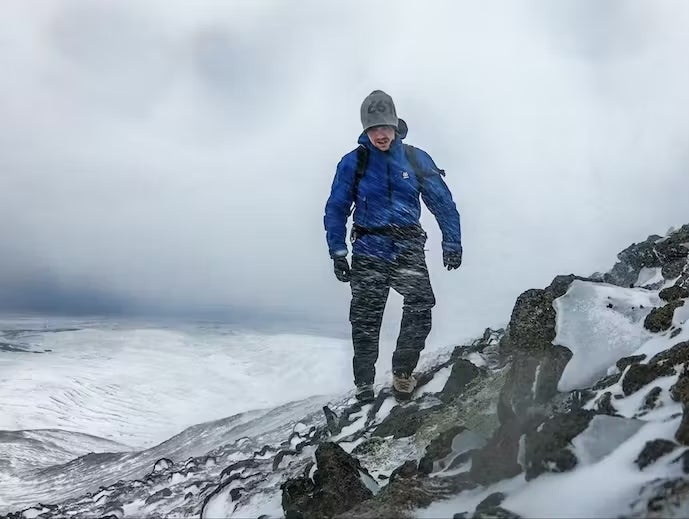 Iceland has some stunning glaciers, including the majestic Vatnajokull, the largest glacier in Europe. They offer many chances for adventures, such as glacier hikes, ice-caving tours, and snowmobiling over the icy plains that are sure to provide long-lasting winter memories.
Iceland has some stunning glaciers, including the majestic Vatnajokull, the largest glacier in Europe. They offer many chances for adventures, such as glacier hikes, ice-caving tours, and snowmobiling over the icy plains that are sure to provide long-lasting winter memories.
Expect it to feel colder on the ice due to wind and exposure. Wear a wicking base layer, a warm mid-layer, and a waterproof, windproof shell jacket with shell pants. Most guided glacier tours provide technical gear such as helmets and crampons; hiking boots that accommodate strap-on crampons are required for glacier hikes. For ice caves, operators may offer micro-crampons or different traction devices depending on the surface conditions. Bring waterproof gloves and thermal socks, and consider goggles or sunglasses to cut glare off the ice. Sunscreen is still a good idea.
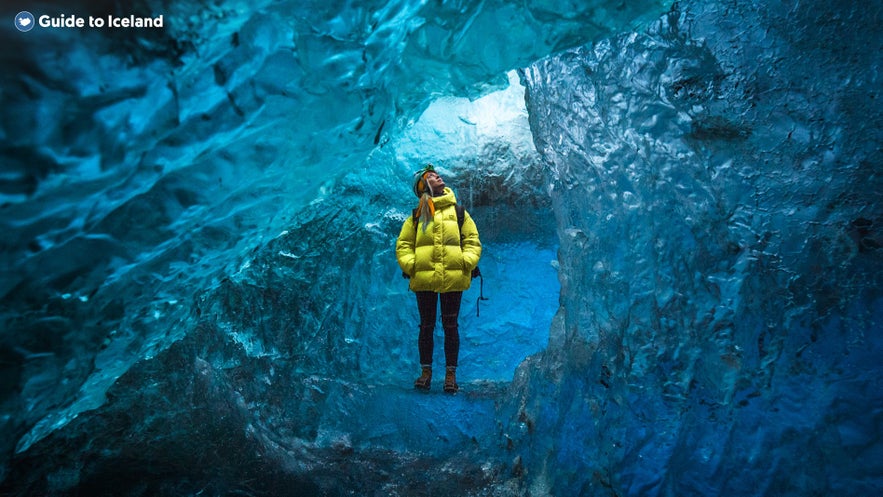
For glacier hiking or snowmobiling in the open, emphasize wind protection since you won't have cave walls for shelter. A neck gaiter or balaclava helps with spindrift and wind chill.
- Learn more: What to Wear for Glacier Hikes in Iceland
Northern Lights Tours in Iceland

One of the most magical aspects of the Icelandic winter is the chance to see the northern lights dancing in the night sky. Because the lights can require long periods of waiting in the cold, dress warmer than you think you need. Add an extra mid-layer or choose an expedition-weight parka. Insulated pants or a long down skirt over base layers keep legs warm while standing still.
Wear a warm hat or balaclava, windproof mittens, and thick wool or thermal socks. A blanket, sit pad, and a thermos of hot chocolate, tea, or coffee make a big difference. Take breaks in a warm vehicle between sky checks and use reflectors if you're near roadsides.
- Learn more about the Northern Lights in Iceland - When & Where To See the Aurora
Dog Sledding in Iceland

One of the most charming ways to enjoy the snowy winter landscape is by going dog-sledding in Iceland. Sweeping across the snowy plains in the company of fluffy dogs is a memorable experience for any animal lover visiting Iceland in winter.
Prioritize warm base and mid-layers, good gloves or mittens, and a warm hat. Many tour operators offer insulated overalls to protect from the cold and keep your clothes clean—check in advance. If not provided, bring a warm, waterproof jacket and shell pants that are easy to clean. Sunglasses or ski goggles help with sun glare and any snow kicked up by the team.
- Learn all about Dog Sledding in Iceland
Other Essentials to Pack for Iceland in Winter
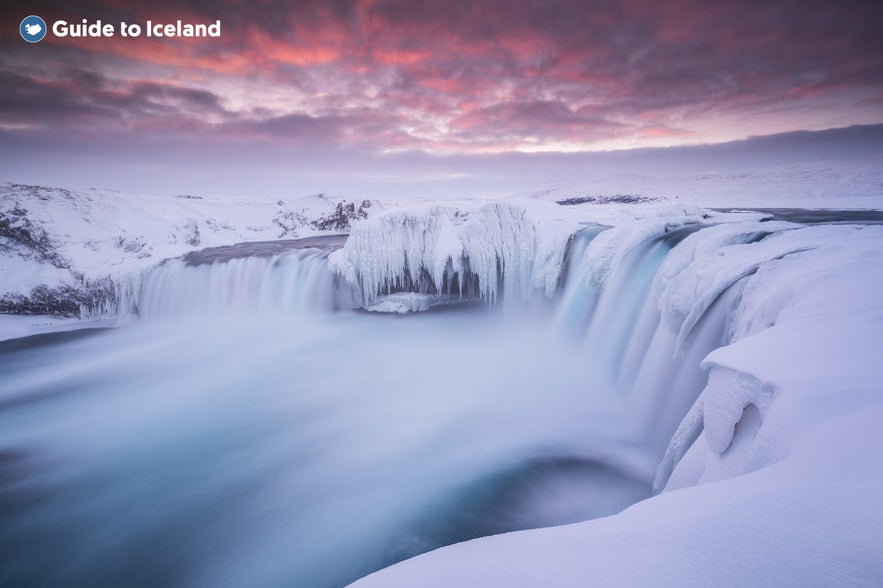 Besides clothing, there are several other essential items and accessories to consider. A durable, waterproof daypack keeps your belongings dry, especially in caves or on snowy paths. If you want to capture the northern lights and beautiful nature, bring a camera, spare batteries (the cold drains them quickly), and protective covers.
Besides clothing, there are several other essential items and accessories to consider. A durable, waterproof daypack keeps your belongings dry, especially in caves or on snowy paths. If you want to capture the northern lights and beautiful nature, bring a camera, spare batteries (the cold drains them quickly), and protective covers.
Add a portable power bank, a thermos for hot drinks, and a reusable water bottle, as tap water is safe and delicious. In the darker months, a small headlamp and a clip-on reflector improve safety on foot. For traction in towns, pack ice cleats (microspikes).
If you're heading to remote areas, bring a first-aid kit (including blister care), paper maps or GPS, and download Iceland’s main safety tools before you travel. Use the SafeTravel website for travel alerts and safety advice, and download the 112 Iceland app for emergency assistance and location check-ins. Vedur provides accurate weather forecasts and Road.is gives road and driving conditions.
These resources, combined with the right clothing, will help you stay safe and prepared throughout your Icelandic winter journey.
Quick Iceland Winter Packing Checklist
-
Moisture-wicking base layers (tops and leggings, preferably merino)
-
Warm mid-layers (fleece or wool sweaters)
-
Waterproof, windproof jacket and shell pants
-
Sturdy waterproof boots suitable for walking on snow and ice
-
Ice cleats (microspikes) for city streets and car parks
-
Warm hat or balaclava and neck gaiter
-
Insulated mittens plus thin liner gloves
-
Thermal socks and spare pairs in your daypack
-
Swimsuit, flip-flops, and quick-dry towel for pools and hot springs
-
Sunglasses and sunscreen for snow and ice glare
-
Moisturizer, hand cream, and lip balm
-
Clip-on reflector for dark hours
-
Camera with spare batteries and protective cover
-
Portable power bank
-
Reusable water bottle
How's the Weather in Iceland in Winter?
The winter in Iceland generally lasts from November until early April, and weather and daylight vary through the season. Thanks to the warming influence of the Gulf Stream, Iceland is often milder than many visitors expect for its latitude, though winds and sudden weather changes can make it feel colder.
November and December
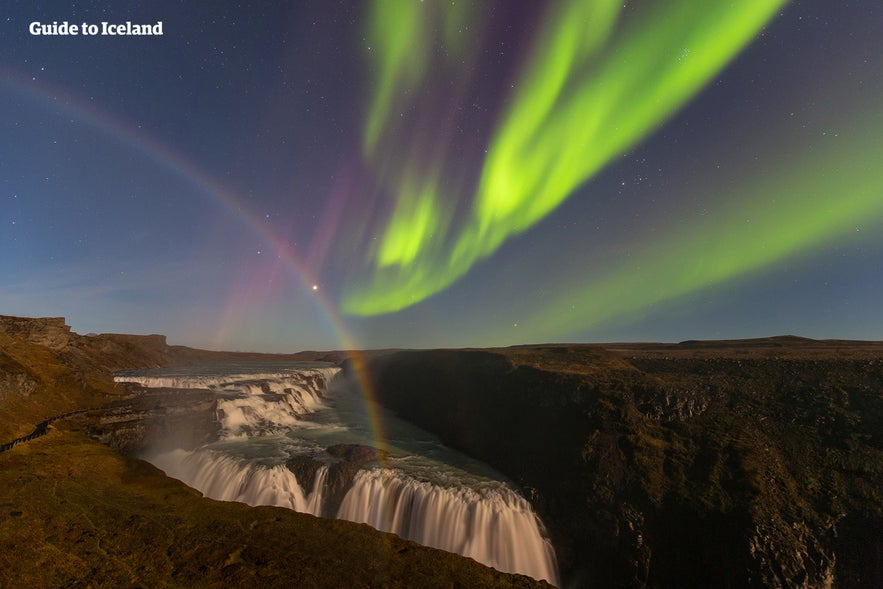
November and December mark the start of winter. Typical temperatures hover around freezing, with occasional dips below. Snow becomes more frequent outside the South Coast. Daylight shortens dramatically as the solstice approaches—around late December, Reykjavik has roughly four hours of direct daylight, with additional twilight extending the usable light. It's a prime time for northern lights hunting but requires reflective gear and headlamps for late-afternoon outings.
- Learn more about Iceland in November and Iceland in December
- See also: Northern Lights in Iceland - When & Where To See the Aurora
January and February
 January and February are the heart of Icelandic winter. These months can be quite cold, with temperatures sometimes dropping to -10°C (14°F) or below on the coldest days. Snowfall is more consistent, and winds can be strong, so plan extra warm layers and windproof shells. Daylight begins to increase again after the solstice, giving you more exploring time each week. If you'll be driving in heavier snow or venturing beyond the capital area, a 4x4 rental vehicle is recommended for driving in Iceland in winter.
January and February are the heart of Icelandic winter. These months can be quite cold, with temperatures sometimes dropping to -10°C (14°F) or below on the coldest days. Snowfall is more consistent, and winds can be strong, so plan extra warm layers and windproof shells. Daylight begins to increase again after the solstice, giving you more exploring time each week. If you'll be driving in heavier snow or venturing beyond the capital area, a 4x4 rental vehicle is recommended for driving in Iceland in winter.
- See also: Iceland in January and Iceland in February
March and April
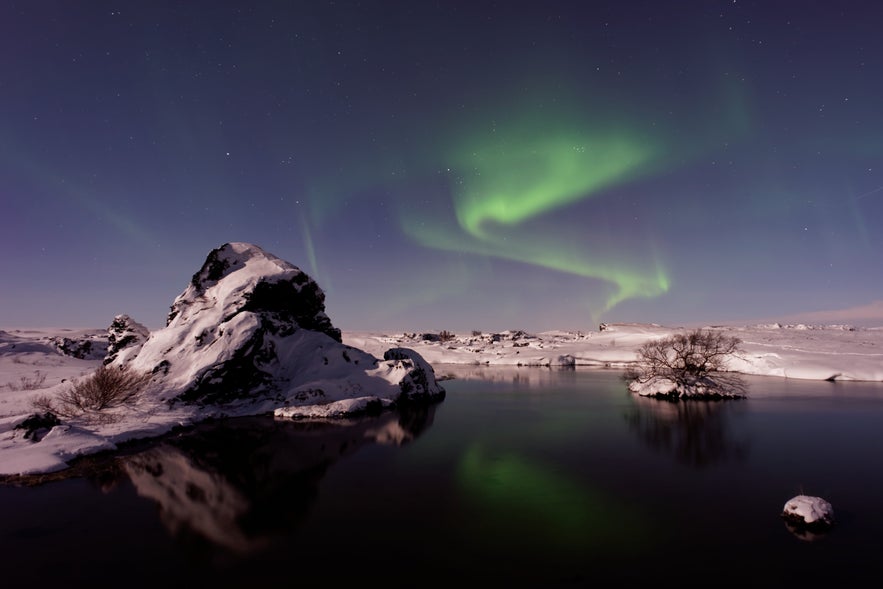 As Iceland bids farewell to winter, March and April bring transition. Average temperatures trend from around 0°C up to 5°C (32°F–41°F), and daylight grows quickly—from about 10 hours in early March to well over 13 hours by mid-April. Expect a mix of wind, snow, sleet, and sunshine. Stick with your layering system and waterproof footwear so you can adapt to changing conditions.
As Iceland bids farewell to winter, March and April bring transition. Average temperatures trend from around 0°C up to 5°C (32°F–41°F), and daylight grows quickly—from about 10 hours in early March to well over 13 hours by mid-April. Expect a mix of wind, snow, sleet, and sunshine. Stick with your layering system and waterproof footwear so you can adapt to changing conditions.
- Discover Iceland in March and Iceland in April
FAQs about What to Wear During Winter in Iceland
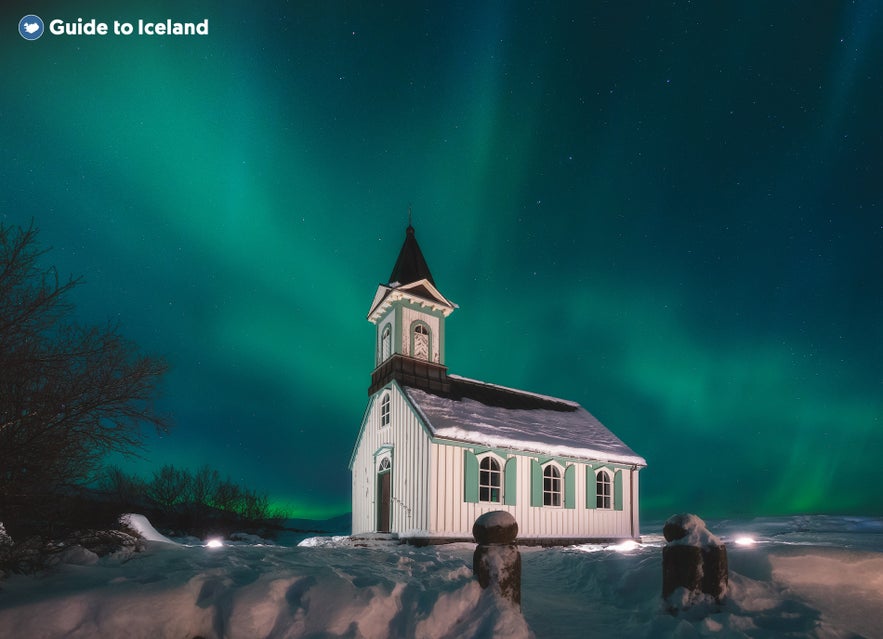
Here are some of the most asked questions about the Icelandic winter and what's best to wear.
Is Iceland extremely cold in winter?
Iceland is often not as cold as many people expect, especially compared to inland areas of North America or mainland Europe at the same latitude. Winter temperatures in Reykjavik typically hover around freezing, though wind, humidity, and sudden weather changes can make it feel colder. Good layers and windproof outerwear are more important than huge, bulky coats.
Can I rent winter clothing in Iceland?
Yes. If you don't have suitable winter clothing or prefer to save luggage space, you can rent outdoor gear on Iceland's largest travel marketplace —including hiking boots, crampons, jackets, waterproof pants, and more. Book in advance in peak season to ensure availability.
Do my outer layers need to be waterproof?
Waterproof, windproof outer layers are strongly recommended because winter often brings a mix of rain, sleet, wet snow, and high winds. A windproof-only softshell can work on dry, calm days, but a waterproof shell is the most versatile choice for Iceland.
Should I pack ice cleats or crampons?
Pack compact ice cleats (microspikes) for walking on icy sidewalks and car parks. For glacier hikes and ice caves, your guide provides technical crampons and a helmet; use those only under guidance and with suitable boots.
Do I need special clothing for visiting restaurants and bars?
In Reykjavik, casual to smart-casual is the norm. A stylish sweater or shirt with pants and comfortable shoes is perfect. If you'd rather keep it simple, you can dine in your winter gear and you'll still feel welcome.
Should I pack an umbrella for winter in Iceland?
An umbrella is rarely practical due to strong winds. A waterproof jacket with a hood—or a rain poncho—is a much better option.
Do rental cars come with winter tires?
During winter, rental cars are typically equipped with winter tires, sometimes studded depending on conditions. Studded tires are typically permitted from early November to mid-April, though exact dates can vary slightly each year, and winter tires must meet minimum tread-depth rules. If you plan to drive outside the capital area, consider a 4x4 and always check the day's weather and road conditions.
- Discover Iceland's Seasonal Contrasts
- See also: Most Unique Experiences in Iceland
Preparing properly for Iceland's winter conditions can make your trip much safer, more enjoyable, and more comfortable. Remember, the key is to be ready for cold, wind, and rapidly changing weather so you can make the most of your winter visit to Iceland.
What would you do during a winter trip to Iceland? Which month would you choose for your visit? Have you been to Iceland before? Please share your thoughts and experiences with us in the comment section below!


